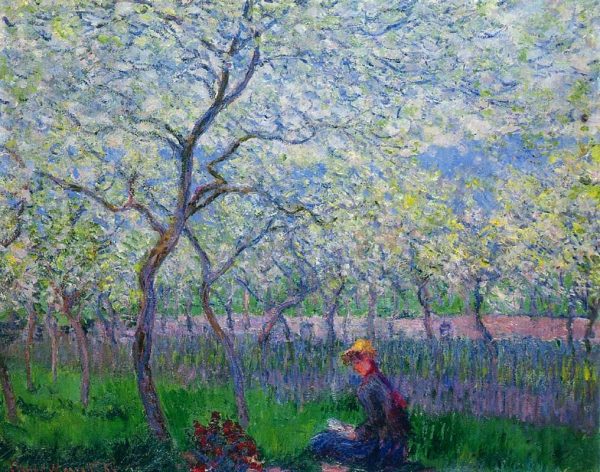[ad_1]
Cost and value are two very different things when it comes to artwork — so how do you price your artwork and realize its value?
It’s a universal truth that an artwork’s value is in the eye of the beholder. Some artists can make a few marks on a canvas or cheap bit of cardboard and their work sells for thousands and more. For others it feels impossible to get even the cost of the materials back, let alone a price that reflects your training and your talent.
Pricing your work can be a difficult business. Price it too high and buyers can’t afford it. Or price it too low and the buyer will think it’s worthless. So what should you consider when pricing your work?


How much did it cost to make?
Before getting on to the overall pricing your artwork, you should consider the basics of how much it cost you to make.
Materials
If you paint acrylic on canvas sheets, the outlay may seem very small, while huge thickly painted abstracts will use up significantly more resources. And while someone might only be buying a single artwork, creating that work might have taken many preparatory works, photographs and sketches. Be sure to include all the materials you used, such as paint, canvas, primer, chalk, paper, etc.
Your time
Artists can take months on a single work, while others can knock out several in a day. Ironically the time it takes you to produce the work will have little impact itself on its value. Intricate work might look like it took time to make and that will give the buyer a sense of security in that it’s not just paint splashed on a canvas.


Size
American Abstract Expressionists Mark Rothko and Jackson Pollock may have popularized huge abstract painting, but large canvas works are nothing new. Monet was known for some very long paintings of his water lilies, designed as a kind of frieze that would go around several walls.
It seems obvious to say, but the larger the work, the more it will generally cost to make. If you paint on wood, the extra cost might be minimal compared to stretched canvas, but you also need to consider your other materials that fill the canvas.
When curating a collection (online or in a gallery), ensure you have a full range of sizes and create a price list that always puts the larger work at a much higher cost. Consider showing just one large work in any show to create a sense of its unique value. Large works are more unusual in the art market, and while the demand for a 6 ft. painting might be lower than those sized closer to 3 ft., buyers will expect it to cost significantly more. You should also consider packaging and shipping, which can cost hundreds for larger works. Offering free shipping could cut seriously into your profits!
Hidden costs
Selling through a website has costs that you should take into account. Selling yourself usually means keeping most of the money, but using sales/merchant plugins on websites means they will take their cut — expect to lose 10 to 15% of sales.
Another hidden cost as a trained artist is your education. You have probably invested tens of thousands of dollars in your art practice, not to mention endless use of materials. To break even on the cost of training, you will probably have to sell a lot of work. This is a tricky equation, but consider tacking on a set amount to works as a way to cover your training costs.
The market will decide
It’s easier to reduce the price of work than it is to increase it, so start higher. Look at works for sale through professional galleries. The pricing will be based on the kind of assumptions above, but also the kinds of people who visit the gallery. These might be serious collectors who will pay tens of thousands or casual shoppers looking for something nice to hang above the sofa. And remember, if you decide to see through a gallery, it will take as much as 50% of the price tag.
Tips to increase your value
Art collectors will value work if they see that you value it. Consider your own experiences of buying, for example, jewelry from high-end boutiques and world-famous designers to something from your local market. The value of the metal might be the same, but you are purchasing more than an ounce of 18ct gold. Some of that will be linked to where you buy it.
This comes down to some simple tricks and tips to making your work valuable.
Really good photography and plenty of it
If people are buying online, they will want to know what it looks like on a wall, if it is framed, and they’ll want close-ups of the surface to get a feel for the work. There is simple software now available that lets people place your work in their own home. We have plenty of tips on how to take good images of your work.
A consistent approach to work
This will mean everything from the sizing, pricing and materials used. If you like to work in different mediums and surfaces, or paint different things, consider creating a series of works that group together similar work and avoid a garage sale approach. This may be style (portraiture, landscape, still life, abstract) or medium (watercolor, oil, gouache).
If you paint large and small works, consider grouping smaller works together as studies.
Artist biography
If people just want something pretty to hang in their home, there are plenty of options for cheap prints. Part of what they are buying from a named artist is a bit of you. You can make that easy by providing a solid biography. As standard, this should include your name, education and exhibitions. Your biography should also include a short few sentences about your approach to your work. We have some great advice on creating a great artist statement.


A stunning website
As an artist, your website is your gallery and a stunning site with great photography and good design will do a lot of the work for you. We have some great advice on creating the ultimate website in our series.


Evidence of SOLD work
We all want what we can’t have. Keep visible any work that has been sold on your site or exhibition so visitors can see that other people think your work is worth it. If it is in an exhibition, don’t take it down before the end of the show, just add one of those coveted red dots to the wall. If someone really loves it, they can commission something similar.
Lists of art exhibitions, shows and galleries, as well as any collections of note
Again, investment in you from gallerists and show organizers will increase confidence in the value of your work.
Consider postage and packaging
This is about having good after-sales care. Ensure packaging is sufficient and professionally done. Invest in cardboard corner protectors for paintings and plenty of bubble wrap and fragile stickers. Get a professional delivery service rather than a man-with-van if you can afford it.
Paperwork
You should also always include a certificate of authenticity (think of it as a posh receipt). Include an image of the artwork they have purchased, and its title, when it was created, the medium and a little about you, the artist. Print it out on nice paper and include all your contact details in case someone else likes it enough to buy one.
Add-ons
You might want to send a signed catalog with your work. Even if the work was bought online, a catalog could simply include images of some of your work with short written descriptions and your biography. If nothing else they might share with friends and family who might be tempted by another piece themselves.
You could also include an invitation to a private view or open studio event and can include an exclusive offer.
[ad_2]
Source link




